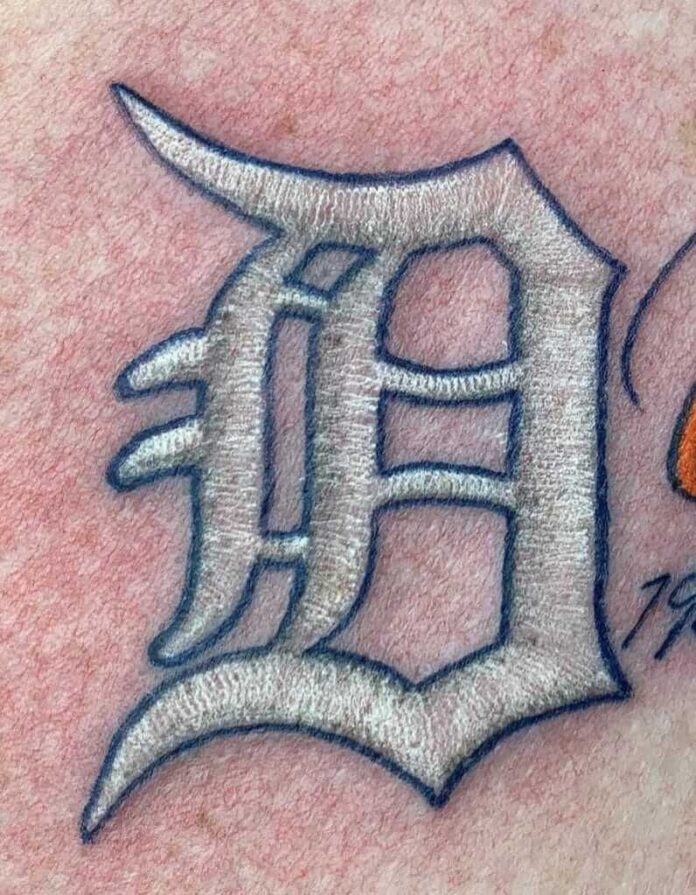“Stitching Science into Skin: The Art and Future of Faux-Embroidery Tattoos and Smart Textiles”
Greetings, textile enthusiasts and tech aficionados! Today, we dive into an intriguing blend of fabric artistry and skin art—embroidered tattoos, also known as faux-embroidery tattoos. Before we get into the thick of it, consider this: Have you ever admired the intricate textures of an embroidered logo and wished you could carry such a detailed piece of art on your skin permanently? Well, you’re not alone. This unique intersection of embroidery and tattoo artistry is turning heads and pricking interests worldwide.
The Allure of Embroidered Tattoos
Embroidered tattoos capture the tactile and three-dimensional appeal of traditional embroidery through the expert use of tattooing techniques. Just like emulating the tight, raised stitches of a patch or badge, these tattoos simulate a textured, almost fabric-like appearance on the skin. The effect is nothing short of mesmerizing—tattoos that look as if they could be felt and have depth.

One of the astonishing aspects of these tattoos is the meticulous attention to detail. Tattoo artists employ extraordinary precision to mimic the layers and textures of stitches. Elements such as French knots, satin stitches, and cross-stitches are carefully replicated to make the artwork appear convincingly embroidered. For example, a Red Sox logo rendered in this fashion looks so real you might be tempted to run your fingers over it to feel the threads.
Why Embroidery? A Cultural and Practical Perspective
To understand the fascination behind these tattoos, it’s valuable to know a bit about traditional embroidery and tattooing.
Embroidery is the craft of decorating fabric or other materials using a needle to apply thread or yarn. Throughout history, it has been employed to embellish clothing and home decor items, adding a layer of texture and personalized detail that is both stylish and meaningful. Embroidery employs different stitches (like satin stitch, chain stitch, and cross-stitch) to create intricate patterns and images.
Similarly,
tattooing is an ancient art form where a needle is used to insert ink into the skin. Styles and techniques vary widely: from the simple, traditional dot work of indigenous cultures to the sophisticated, colorful pieces seen in modern tattoo parlors.
The overlap of these traditions in embroidered tattoos—both using a “needle” to create art—makes for a logical yet fascinating fusion. On one hand, it’s a tribute to the craftsmanship of embroidery; on the other, it embraces the boldness and permanence of tattoo art.
The Digital Spin: Smart Textiles
Now, while we’re talking needles and threads, let’s not forget that we’re living in a modern era where technology is continuously evolving. This brings us to the world of
smart textiles. Smart textiles (also known as e-textiles) are fabrics that enable digital components, such as battery and lights, to be embedded in them. Some advanced textiles even react to environmental changes (think color-changing fabrics).
Imagine if these faux-embroidered tattoos could integrate smart textile technology. While this is purely speculative, consider the potential: tattoos that can illuminate, respond to touch, or even change color with your mood or environment. We’re already seeing such advancements in wearable tech and textiles, so who knows what the future holds for body art?
Crafting the Perfect Faux-Embroidery Tattoo
Creating an embroidered tattoo demands a high level of skill and understanding of both disciplines. The tattoo artist must consider factors like:
1. Depth and Texture:** Unlike standard tattoos that rely on shading and color gradients, embroidered tattoos rely on creating the illusion of depth and texture. This requires a deep understanding of light and shadow to mimic how actual stitches catch and reflect light.
2. Detail and Maintenance:** The intricate nature of these tattoos means that they can lose their fine details over time. This is due to the natural healing and aging process of the skin. Maintaining their appearance might require periodic touch-ups, which isn’t usual for traditional tattoo subjects.
3. Design Choice:** The choice of design plays a crucial role. Not all images translate well into the faux-embroidery style. Logos with bold, simple lines often fare better. For example, sports team logos or simplistic iconic symbols make suitable candidates for embroidered tattoo designs.
Think of a logo like that of the Boston Red Sox or the Dallas Cowboys rendered with this faux texture—it grabs attention and certainly becomes a talking point. Even the non-sports-related designs, such as floral patterns or elaborate crests, can be transformed into visually stunning body art.
The Connection to Technical Textiles
In the same vein, let’s touch upon
technical textiles**. These are fabrics engineered for specific functions beyond aesthetics. Like bullet-proof vests made from Kevlar or thermal-resistant fabrics used in firefighters’ suits, technical textiles showcase what’s possible when function meets design.
Interestingly, as we explore technical textiles, the idea of blending functionality into tattoo art is compelling, albeit not yet in practical terms. Could tattoos have real-life applications beyond the artistic? While some cultures already imbue tattoos with meanings that translate into social signaling or personal values, adding a technological element introduces new possibilities.
Future Visions: The Plastic Tattoo?
The article also brings up a curious idea—plastic tattoos. Now, this might sound far-fetched or even unappealing to some, but imagine the capability to integrate elements that mimic not just embroidery but other materials like plastic or metal. This could lead to “tattooed” circuits or truly hybrid art forms that could serve dual purposes—art and utility.
Already, we have seen advances in bio-compatible technology. Bio-inks used in tattooing could potentially deliver more than just pigment. They might carry drugs, nanobots, or sensors that interact with a person’s physiology. Maybe one day, you could have a “tattoo” that monitors your health indicators and provides real-time feedback.
Embracing the Old and the New
As we explore embroidered tattoos, we find ourselves at the intersection of tradition and innovation. The meticulous craftsmanship of embroidery and the bold permanence of tattoos converge to create something uniquely beautiful. While advances in smart and technical textiles teasingly suggest a future where art meets utility in unseen ways.
In summary, embroidered tattoos are not just a fleeting trend. They are a testament to human creativity, adapting ancient crafts for modern expression. They invite us to imagine a world where the skin itself could become a canvas for evolving stories, be it through a simple needle prick or the magic of technological integration. Who knows? The next time you think of getting a tattoo, you might consider an embroidered one, and down the line, even a functional one embedding the advancements of smart textiles.
So here’s to innovation, and here’s to the intersection of the old and new. Keep an eye on this space, because when it comes to textiles and technology, the possibilities are as endless as our imaginations. Stay tuned, textiles geeks—because the next big thing in body art might just stitch its way into your hearts and onto your skins!
Keywords: Embroidered tattoos, Tattoo artistry, Smart textiles (Post number: 189), Technical textiles, Faux-embroidery





